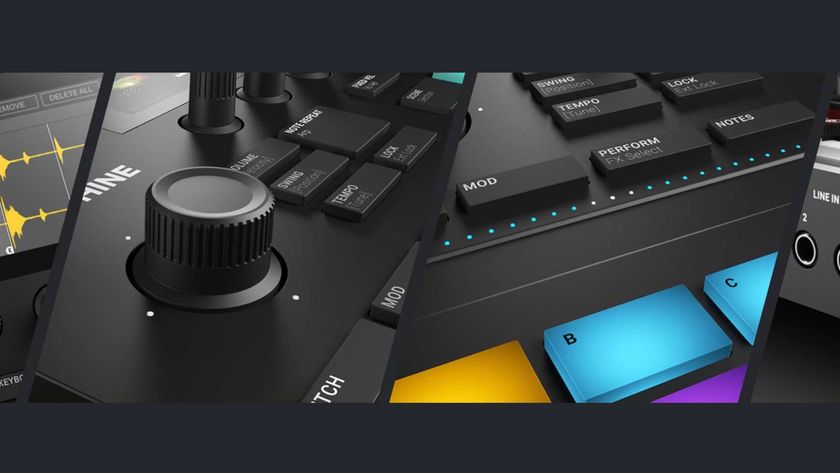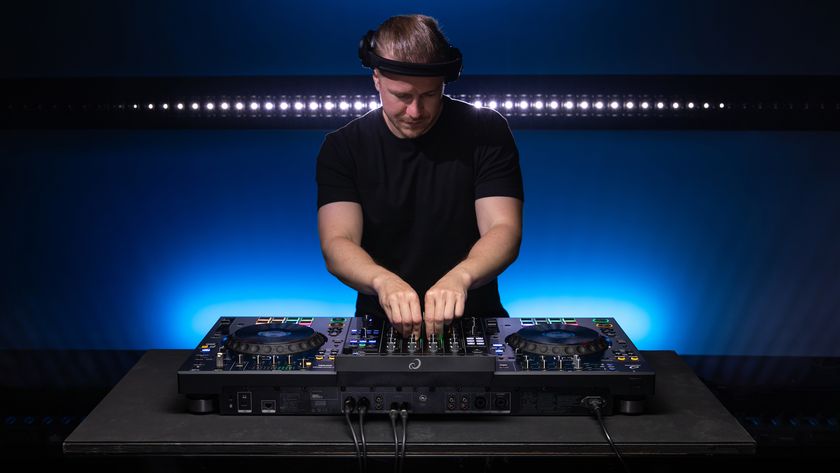10 DJing controllers that defy convention

You don't see that every day
If you are a digital DJ, or aspiring to become one, you must have noticed that MIDI controllers are big business. From simple facsimiles of analogue setups to slabs of lights and buttons that wouldn't look out of place on the Starship Enterprise, they’re everywhere.
Head down to your local DJ store and you will see that in practice, most of the controllers aimed at DJs are largely in the same vein: two jog wheels, some transport controls and a mixer section. Sure, this makes sense, but it's not in keeping with the new age of digital DJing. Advances in DJ software mean that the old 'ones and twos' model is outdated, and conventional controllers are a poor fit for the modern DJ’s demands.
Fortunately, we've compiled a list of ten controllers that defy convention. They either forge their own unique path or are primarily designed for a purpose other than DJing. From the cool to the completely bonkers, these devices fly in the face of their 'me too' counterparts. Some might not seem that unusual at first, but you may not have thought about them as candidates for your mixing setup in the past
We'll ease in gently with some purpose built but none the less different devices and finish up somewhere completely off the DJ map.
NEXT: EKS Otus Raw
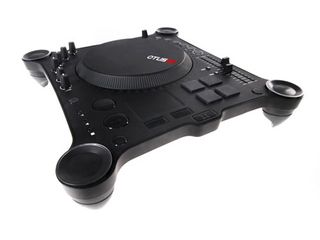
EKS Otus Raw
What is it?
A stylish, turntable inspired controller and the newest member of the EKS Otus family. The Otus has been designed so that it can sit snugly atop a Technics turntable, making it practical for use in most DJ booths. USB and mains power options and a built-in audio interface mean it can be used just with your laptop, or as part of a more elaborate setup.
The RAW sits somewhere between turntable emulation and a forward-thinking technical controller. This means that it might appeal to both those crossing over from vinyl into the digital world and laptop DJs who have already hopped the fence.
What can I do with it?
The Otus Raw has a 7.5-inch platter, making it ideal for scratching, old skool beat juggling and manual mix adjustments. The Raw also has plenty of useful control goodies for you to play with, including fully assignable rotaries, buttons, velocity pads and even a touch-sensitive X-Y pad.
A shift option gives each knob or button two functions - ideal for controlling two decks - although the more adventurous might experiment with more exotic configurations. For example, you could use the two faders for pitch control, but how about having one for FX amount and the other for loop length?
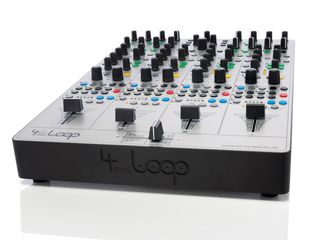
Glanzmann Digital DJ Solutions 4midiloop
What is it?
4midiloop is a high-end four deck controller built with Traktor very much in mind. At first glance it looks like someone sneezed a tube of Smarties over a mixer, and anyone familiar with the Faderfox range will instantly spot the same DNA in this unit as it has identical buttons and faders.
The 4midiloop is clearly designed for the DJ that wants granular level control. With no built-in soundcard and a fairly large footprint, it's more like four single deck controllers joined together in one impressive unit.
What can I do with it?
Take 166 push buttons and a shift button for dual functionality and the question really is, what can't you do with it? There are no jog dials, so scratching would be one of those things, but with its 4-channel style layout, the obvious advantage is for those who like to use their DJ software's internal mixer.
Or how about using all this real estate to control two different programs at the same time - such as Ableton Live and Traktor? This, of course, is strictly for the hardcore, but using the two together is becoming increasingly popular, and with enough buttons and faders to go round, the 4midiloop is the ideal, albeit expensive solution.
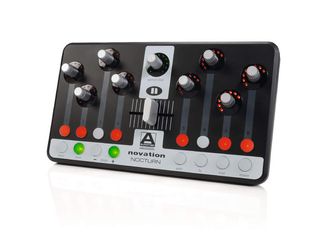
Novation Nocturn
What is it?
Small and affordable, the Nocturn has nine rotaries, eight buttons and a crossfader, as well as eight dedicated function buttons for the included Automap software. Automap aims to make the control mapping process simple, but requires the software you want to control be compatible with it (most VST plug-ins are). Even non 'Automappable' programs can be controlled by creating a MIDI client and using the software's MIDI learn function instead.
All the dials are backlit for visibility in dark environments, and its diminutive form makes the Nocturn ideal for those wanting a small setup or for DJs who have a main controller, but need something quick to hand for dedicated tasks, such as effects or basic mixer functions.
What can I do with it?
The size and layout of the Nocturn make it a great choice for the digital DJ who wants simple mixer controls, with automatic syncing taking care of the beat matching. The rotaries are ideal for assigning to EQ controls for smooth transitions between songs, and you can spice things up a little by using the buttons for cue points, giving you a neat, space friendly set-up. If you already use a digital vinyl system or hardware controller, but are looking for something separate for controlling effects, then the Nocturn could be just the trick.
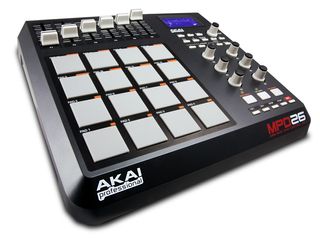
Akai MPD26
What is it?
The MPD26, with its 4x4 grid of trigger pads, is a MIDI controller that gives more than a nod to Akai’s classic MPC series. The pads on the MPD26 come straight over from the MPC range, complete with velocity and pressure sensitivity. There are four banks on each pad making an effective total of 64. Beyond the pads there are six faders and six rotaries, plus dedicated DAW transport controls.
The MPD26 can be powered via USB or mains and, in keeping with its studio heritage, has physical MIDI ports around the back.
What can I do with it?
It's not much of a stretch to suggest that the MPD26 will appeal to DJs looking to make heavy use of cue-point triggering, loop firing and one shot samples. Ableton DJs might prefer the smaller form and stripped back number of controls compared to the ubiquitous APC40, but users of other software, particularly those who use sample decks/players and want to bring that part of their performance to the forefront, could do worse than to look at something like the MPD26.
Use this alongside a platter-based controller like the Otus Raw and you have a formidable range of options available that would satisfy even the most demanding of digital DJs.
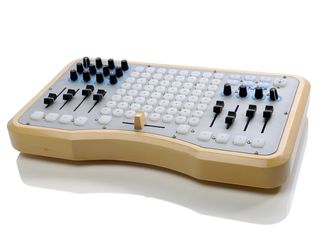
Livid Instruments Ohm64
What is it?
As well as being an object of pure desire, the Ohm64 is also a fully customisable, hand-built MIDI controller. Using something of a hybrid layout, it houses a central grid of trigger buttons flanked by an asymmetrical collection of rotaries and faders.
Mappings are available for Ableton Live and Traktor, and a bustling community of developers has expanded the functionality of the Ohm64 with custom Max/MSP/M4L scripts and mappings. Everything about the Ohm64 is tweakable, from the MIDI signal of every button - via dedicated mapping software - right up to the LED colours and finish of the wood (when ordering).
What can I do with it?
The central matrix should massively appeal to the Ableton DJ, and the aforementioned collection of scripts will only amplify its appeal. Advanced maps for Traktor enable you to access a variety of custom setups right away, or of course you can make your own.
By dividing the grid into quarters you can have transport and effect controls close to hand in a 4-deck set-up, and there are plenty of faders to allow for complete mixer control when no hardware mixer is available - or desired. The lack of jog wheels doesn't mean you need to auto-sync, either; assign faders to control pitch and you have a manual mixing option.
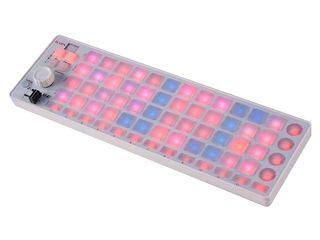
iCon iStage
What is it?
In a nutshell, a cross between a Novation Launchpad and a Korg nanopad. In fact it's part of iCon's 'i-series, which also includes mini keyboard and drum-pad style versions (the latter is called the iPad, curiously). Designed to sit neatly in front of a Macbook, the iStage crams in 48 trigger buttons, 13 function/mode buttons, another four utility buttons, four mode selectors, a rotary knob and a fader.
There is a dedicated DJ controller in the same range - the iDJ - but that is a more conventional, two jog wheels and some faders affair, which is not what we are interested in here.
What can I do with it?
iCon may have stumbled upon an interesting combination with the iStage; dividing the grid of buttons either by two or four can give you generous control of the main transport and mix functions of most deck configurations, while the rotary can be assigned to control multiple parameters via a simple button press. There is also a default Traktor mapping.
If you are looking for the simplest of setups - a laptop and a small controller - then the iStage makes a lot of sense.
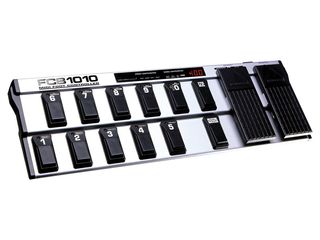
Behringer FCB1010 Midi Foot Controller
What is it?
Yes, it's a MIDI foot pedal, and no we haven't gone mad. The FCB1010 transmits MIDI data just like any other controller, and as such makes it useful for the creative digital DJ. That said, as this wasn't built with the DJ in mind, set up us is a little less straightforward than with some devices; there is no USB MIDI on the FCB1010, for example, so you'll need some way of connecting via the more traditional five-pin cable route.
Control wise you have ten switch-style pedals, two analogue-style moving pedals, and two additional switch pedals for preset navigation etc. The analogue-style pedals are able to transmit a varying range of data in a similar way to a rotary control or fader.
What can I do with it?
Well first of all, you can DJ with your feet! Sure, it's not exactly set for that out of the box, and you’re unlikely to be able to find any mappings for it, but as this is a configurable controller, it's doable.
More appealing, though, will be its usefulness for setting loop and cue-points and triggering/recording samples. The FCB1010 is also perfect for controlling effects while keeping your hands free - great for DVS users and turntablists. If nothing else, it can really add something to your performance when the audience realises that you’re using your hands and feet.
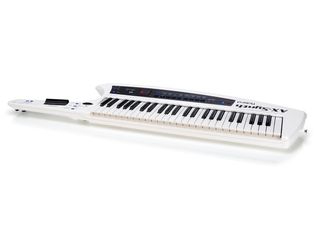
Roland AX-Synth
What is it?
Roland calls it a shoulder synth, but to you and me it's a keytar with MIDI Out. This is not a dumb controller - it’s a full synth with a strap. Many people use simple MIDI keyboards as their controllers, so the AX-Synth's inclusion in this list isn't as wacky as it may at first seem.
We should also say that older discontinued MIDI-only models like the AX-7 are available on eBay and are generally cheaper. One of these could be a good option if you're not interested in the synth functionality which, as a DJ, you might not be.
What can I do with it?
Sure, this might be one just for the extroverts, but if you really want to put on a performance then this is the controller to do it with. You can assign piano keys to sync tracks, trigger effects and so on, but for our money, this controller begs to be used for cue-point drumming and sample launching.
You might not want to play your whole set with it, but with some preparation you could use it for performing that show-stopping live remix of Daft Punk’s Harder Better Faster Stronger and secure yourself internet superstardom at the same time.
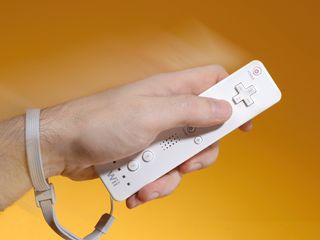
Nintendo Wiimote
What is it?
You probably know what this is already - it's Nintendo’s wireless motion sensitive gaming controller, for the uninitiated - but what is it doing on this list? Yes it's a Wii controller, but at its most basic level it's really just a clever Bluetooth HID device. Bluetooth devices can be paired with most modern laptops, and can therefore be ‘hacked’ so that they become DJ controllers. Just go with us on this one.
WiiJing as it's become known, is the act of DJing using one (or more) Wiimotes to control your favourite DJ software. You will need at least one Wiimote, Bluetooth functionality on your computer, plus an extra piece of software that interprets the Wiimote's gestures. For more information on the technicalities of getting set up check out www.djwiij.com.
What can I do with it?
For all its gimmicky appearance, using Wiimotes can be surprisingly intuitive. There are plenty of videos online of people using them to mix tracks and control effects, which is all you really need. OK, so it might make you look like you are marshalling in an aeroplane, which could be a bit baffling for your audience, but we left convention behind some time ago.
There are pre-made configurations available, but unlike regular MIDI devices these take gestures and button presses, and use an additional layer of software (such as GlovePIE) to convert them into meaningful messages that can be understood by your DJ program.
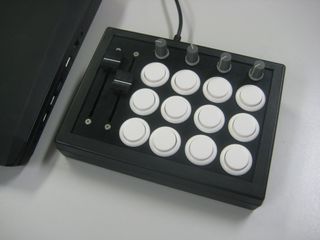
Your own controller
What is it?
Whatever you want it to be! MIDI is just a protocol that was created to simplify the method of machines communicating and synchronising with each other. As such, anyone is able to create their own compliant device and have it work perfectly with any MIDI-capable software.
This may sound like a daunting task, but there are many dedicated How-to and enthusiast sites on the internet such as Instructables. Best of all, you get to build something that has exactly the controls you want, and you might save a buck or two along the way.
If all this sounds a bit hardcore, you could always start off by making one of the many kits available, such as those from DJ Tech Tools or Livid's Builder series.
What can I do with it?
How long (or useful) is a piece of string? With just the limits of your own imagination you can be as conservative or as adventurous as you please.
Perhaps you just want a simple trigger style controller for shooting off samples to complement your more elaborate MIDI surface? Maybe you've thought of the ideal setup that is going to usher in a whole new era of DJ control? Either way, when you are building your own why do something that's been done before when you can tailor something to your specific requirements?
